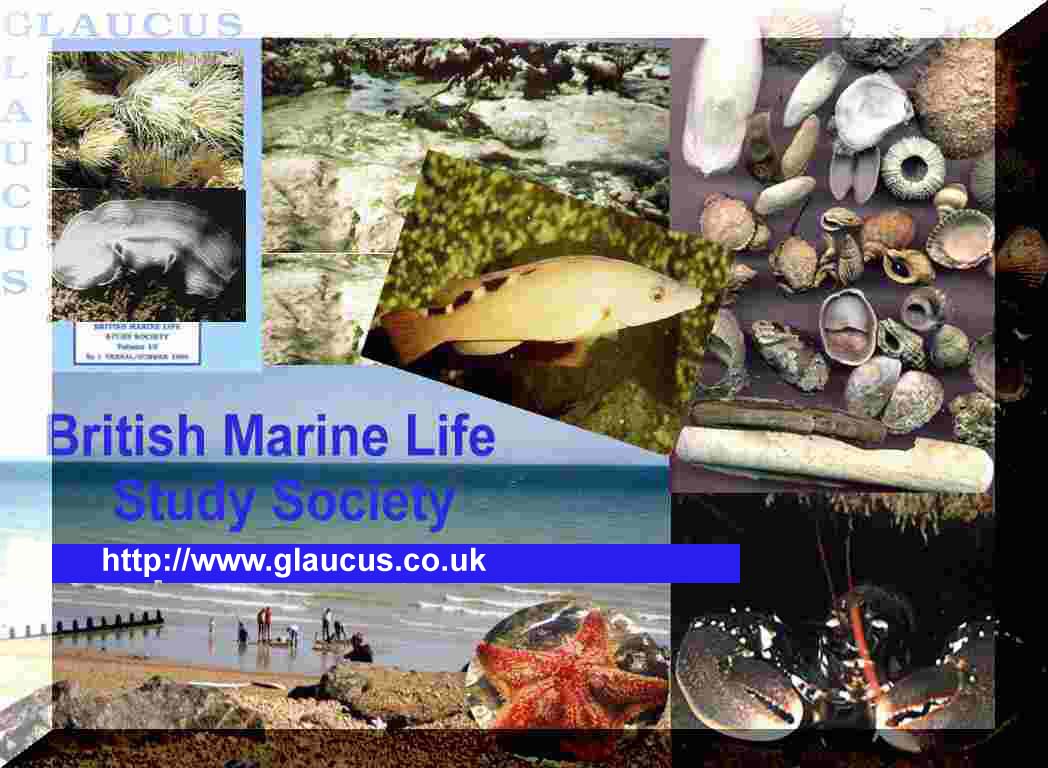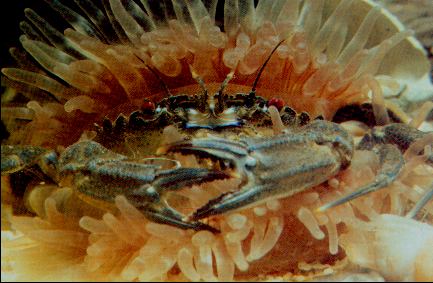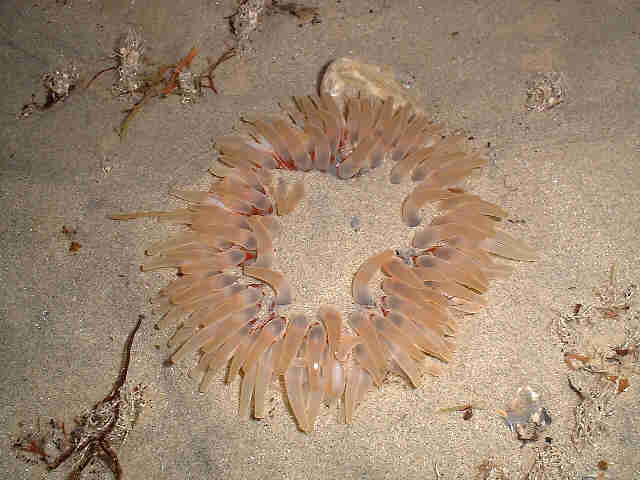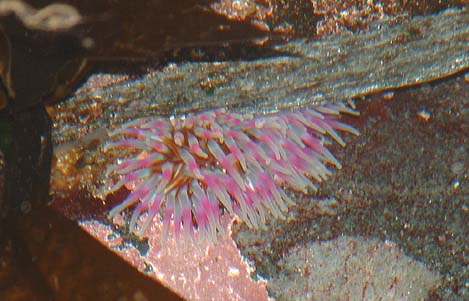 |
| GENERAL
Sea Anemones |
| Movement |
| Feeding |
| Predators |
| Diagram |
|
|
| Placozoa |
| Porifera |
| Cnidaria |
| Ctenophora |
| Mesozoa |
| Platyhelminthes |
| Nemertina |
| Gnathostomulida |
| Gastrotricha |
| Rotifera |
| Kinorhyncha |
| Loricifera |
| Acanthocephala |
| Entoprocta |
| Nematoda |
| Nematomorpha |
| Ectoprocta |
| Phoronida |
| Brachiopoda |
| Mollusca |
| Priapulida |
| Sipuncula |
| Echiura |
| Annelida |
| Tardigrada |
| Pentastoma |
| Onychophora |
| Arthropoda |
| Pogonophora |
| Echinodermata |
| Chaetognatha |
| Hemichordata |
| Chordata |
| CNIDARIA |
|
|
Dahlia
Anemone
 |
Common Name(s):
Dahlia Anemone Scientific Name: Urticina felina Family: Usual Size: cm |
| Identification:
The Dahlia Anemone is the largest of the common sea anemones found around the British Isles inhabitating the shallow seas all around the coast and occasionally found on rocky shores during the colder months of the year. Despite its large size and spectacular colours it is often overlooked between the tides, its tentacles covered in gravel. It is an Arctic species intolerant of sea temperatures in excess of 22°C. DahliaAnemones
Dahlia Anemone off Brighton, Sussex, by Sean Clark (Link) Marlin
Web Page for the Dahlia Anemone
30
March 2002 at
Lancing
Beach.
Similar species: Urticina eques
Habitat:
Food:
The
diet of the Dahlia Anemone
is known to include large crabs and mussels in
their shells. The mussels are smashed off the rocks by the waves and fall
down into rock gullies where these anemones may congregate. Its method
of feeding on crabs is unclear. I am still unsure whether the crabs blunder
into the tentacles and get swallowed up dead or alive. Aquarium
study sheds no further light on the capture. One spider crab species the
Short-legged
Spider Crab,
Eurynome aspera,was
observed to live amongst the blunt tentacles of this sea
anemone for over a year before being swallowed up over night.
 Worldwide, Arctic and temperate, below 22° C. American Pacific photographs at: British Columbia (Canada) Pacific Ocean photographs Additional Notes: Reports:
Report
by Elizabeth Wark
Information wanted: Please
send any records of this sea anemone, with location, date, who discovered
it, how it was identified, prevalence, common name and any other details
to:
|
| FIVE KINGDOMS TAXONOMIC INDEX TO BRITISH MARINE WILDLIFE |
|
|
|
News 2018 |
Membership Form |
|


